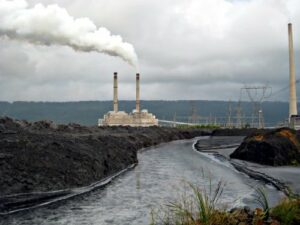EPA Finalizes Four Rules to Reduce Pollution from Steam Electric Power Plants
 On April 25, EPA announced four final rules to reduce pollution from fossil fuel-fired power plants under three different regulatory authorities for air, land, and water. These rules are collectively aimed at protecting public health, advancing environmental justice, and confronting the climate crisis. Related to drinking water, the Steam Electric Power Generating Effluent Limitation Guidelines (ELGs) and Standards under the Clean Water Act (CWA) and the Coal Combustion Residuals (CCR or coal ash) Rule under the Resource Conservation and Recovery Act (RCRA) both include provisions to reduce water pollution from the power sector.
On April 25, EPA announced four final rules to reduce pollution from fossil fuel-fired power plants under three different regulatory authorities for air, land, and water. These rules are collectively aimed at protecting public health, advancing environmental justice, and confronting the climate crisis. Related to drinking water, the Steam Electric Power Generating Effluent Limitation Guidelines (ELGs) and Standards under the Clean Water Act (CWA) and the Coal Combustion Residuals (CCR or coal ash) Rule under the Resource Conservation and Recovery Act (RCRA) both include provisions to reduce water pollution from the power sector.
- The new ELG standards will reduce coal-fired power plant wastewater discharges of toxic metals and other pollutants into lakes, streams, and other waterbodies. Reducing these discharges that can contain mercury, arsenic, selenium, nickel, bromide, chloride, and iodide, and nutrient pollution, will help protect drinking water sources and public health, and achieve other environmental benefits. The final rule includes ELGs for four types of wastewater and creates an updated compliance path to permanently stop burning coal by 2034.
- The final CCR rule under RCRA will protect public health and hold polluters accountable for controlling and cleaning up coal ash contamination at inactive surface impoundments, inactive power plants, and historical coal ash disposal areas. Proper management at these sites will address contamination threats to drinking water, surface water, groundwater, and the air.
For reference, view ASDWA’s May 2023 comments on EPA’s proposed ELG standards. For more information, read EPA’s press release and visit EPA’s Steam Electric Power Generating Effluent Guidelines website and the EPA’s Legacy Coal Combustion Residuals Surface Impoundments and CCR Management Units website.

